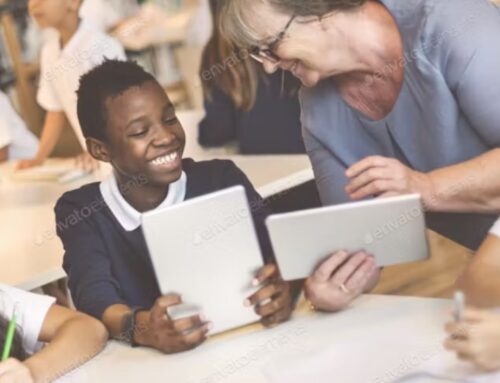Table of Contents
If you’re an educator or a student, you’ve likely heard the terms “edtech” and “edutainment” thrown around quite a bit in recent years. But what do these terms mean, and how do they relate?
Edtech, short for educational technology, refers to using technology to support and enhance teaching and learning. This can include everything from online learning platforms and digital textbooks to educational apps and gamified learning experiences. Edtech aims to make learning more engaging, effective, and accessible for students of all ages and backgrounds.
On the other hand, Edutainment is a term used to describe the combination of education and entertainment. By incorporating elements of game-based learning, interactive media, and storytelling, Edutainment aims to make learning more fun and engaging. It’s not just for kids, either – Edutainment can be used to teach everything from history and science to business and marketing. In short, Edutainment is all about making learning enjoyable and effective.
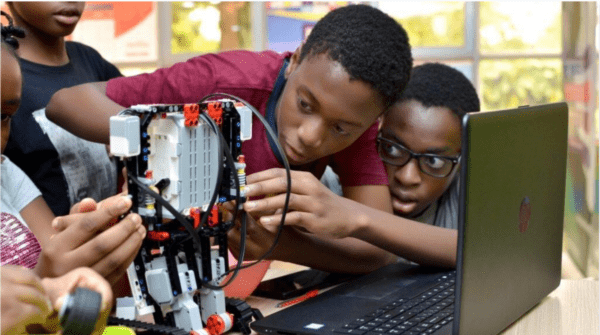
Evolution of EdTech and Edutainment
Historical Perspective
The intertwining of education and technology is not a novel concept. Every significant technological advancement has left its mark on how we impart and absorb knowledge for centuries. From the radio in the 1920s, which made education accessible to anyone within its listening range, to projectors and slide decks in the 1950s to the advent of personal computers in the 1980s, technology has played a crucial role in shaping the education landscape.
Current Trends in EdTech
In recent years, educational technology, EdTech, has undergone significant transformations driven by technological advancements and a growing demand for more accessible learning. Technology has made teaching and learning more engaging, from visual platforms to AI assistance. EdTech has also allowed students to learn at their own pace and convenience. Virtual and augmented reality, gamification, and personalized learning have revolutionized how students learn.
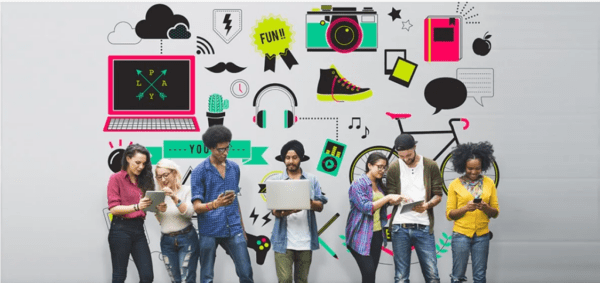
Edutainment as a Learning Tool
Edutainment, the combination of education and entertainment, is another trend that has gained traction in recent years. Edutainment uses entertainment elements to make learning more engaging and enjoyable. It has been used in various forms, from educational games to animated videos, to make learning fun and interactive. Edutainment has proven to be an effective tool for engaging students and improving their knowledge retention.
In conclusion, the evolution of EdTech and Edutainment has revolutionized the education landscape. Technology has made learning more accessible, engaging, and personalized, while Edutainment has made it more fun and interactive. The future of education lies in the continued integration of technology and entertainment elements to create a more engaging and practical learning experience.
Theoretical Framework
Regarding educational technology (edtech) and Edutainment, several theoretical frameworks can inform their development and implementation. In this section, we will explore some of the most important ones.
Educational Theories
Educational theory is one of the most essential frameworks to consider regarding education and technology. Several theories can be applied to these areas, including behaviourism, cognitivism, constructivism, and connectivism.
Behaviourism is a theory that focuses on observable behaviours and the stimuli that elicit them. In the context of edtech and Edutainment, this theory can be used to design programs that reward desired behaviours and discourage undesired ones.
Cognitivism, on the other hand, focuses on mental processes such as perception, memory, and problem-solving. This theory can be applied to edtech and Edutainment by designing programs that stimulate these processes and encourage deeper learning.
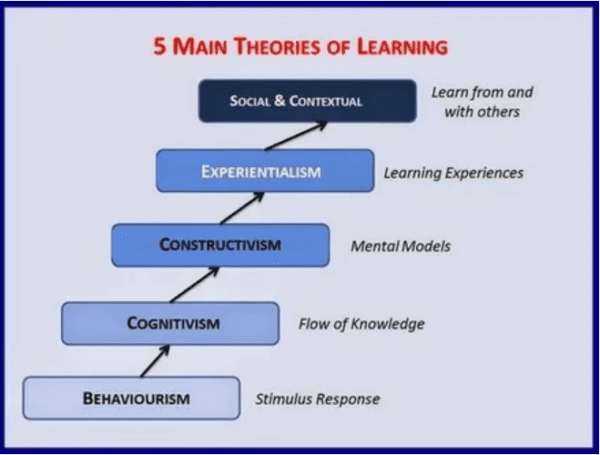
Constructivism is a theory that emphasizes the importance of learners actively constructing their knowledge. In the context of edtech and Edutainment, this theory can be used to design programs that allow learners to explore and experiment with new concepts.
Finally, connectivism is a theory that emphasizes the importance of networks and connections in learning. This theory can be applied to edtech and education by designing programs encouraging learners to connect with others and share their knowledge and experiences.
Cognitive Development and Edutainment
Another vital framework to consider when it comes to Edutainment is cognitive development. This refers to how children develop cognitively over time and how this development can be supported through educational interventions.
Edutainment can be a powerful tool for supporting cognitive development, as it can engage children and motivate them to learn. By incorporating games, stories, and interactive activities, edutainment programs can help children develop critical cognitive skills such as attention, memory, and problem-solving.
In addition to supporting cognitive development, Edutainment can support social-emotional learning and literacy. By incorporating characters and stories that children can relate to, edutainment programs can help children develop essential social and emotional skills such as empathy, self-awareness, and relationship-building. Similarly, edutainment programs can help children develop literacy skills such as phonics, vocabulary, and comprehension by incorporating reading and writing activities.
Overall, many theoretical frameworks can inform the development and implementation of edtech and edutainment programs. By understanding and applying these frameworks appropriately, you can create engaging, effective, and impactful programs for learners of all ages.
Technological Advancements

The education sector is witnessing a significant transformation with the integration of technology. Advancements in technology have given rise to new teaching and learning methodologies, making education more interactive and engaging. In this section, we will discuss some of the technological advancements that have revolutionized education.
Artificial Intelligence in Education
Artificial intelligence (AI) has made significant strides in recent years and is now used in education to enhance the learning experience. AI-powered systems can analyze student data and provide personalized learning experiences. This is known as adaptive learning, where the system adapts to the student’s learning style and pace. AI can also grade assignments and provide student feedback, reducing teachers’ workloads.
Virtual and Augmented Reality
Virtual reality (VR) and augmented reality (AR) are technologies that have the potential to revolutionize education. VR allows students to experience real-life situations in a controlled environment, making learning more interactive and engaging. AR, on the other hand, overlays virtual objects in the real world, allowing students to interact with them in real time. This technology can be used to create immersive learning experiences that are not possible in traditional classrooms.
Adaptive Learning Systems
Adaptive learning systems are designed to personalize the learning experience for each student. These systems use data analytics and machine learning algorithms to analyze student data and provide personalized learning experiences. Adaptive learning systems can identify the strengths and weaknesses of each student and adjust the curriculum accordingly. This technology can potentially improve student outcomes and reduce the achievement gap.
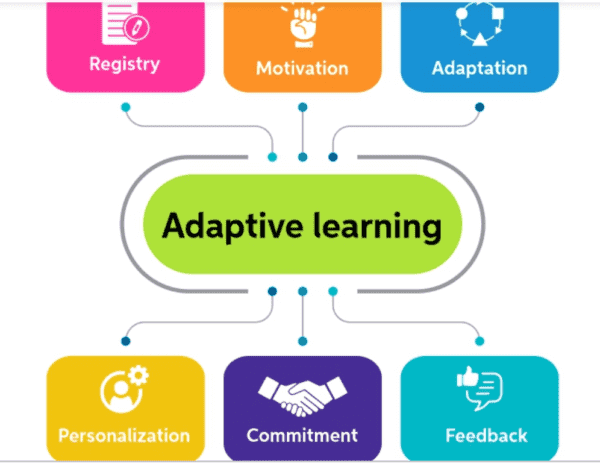
In conclusion, technological advancements have brought about a significant transformation in the education sector. AI, VR, AR, and adaptive learning systems are examples of how technology changes our teaching and learning. As technology continues to evolve, we can expect to see more innovative teaching and learning methodologies in the future.
EdTech Applications
Edtech applications have revolutionized the way we learn and teach. From traditional classroom settings to online learning platforms, edtech applications have made education more accessible, interactive, and engaging. Here are some of the most popular edtech applications:
Learning Platforms and Apps
Learning platforms and apps have made it easier for learners to access educational resources anytime, anywhere. With a wide range of learning platforms and apps available, learners can choose the one that best suits their needs and learning style. Some popular learning platforms and apps include:
- Khan Academy: Khan Academy is a non-profit organization that offers free online courses and tutorials on various subjects, including math, science, history, and more. Khan Academy’s mission is to provide a free, world-class education to anyone, anywhere.
- Duolingo: Duolingo is a language-learning app that offers free courses in over 30 languages. Duolingo’s unique approach to language learning makes it fun and engaging for learners of all ages.
- Quizlet: Quizlet is a learning platform that offers a variety of study tools, including flashcards, quizzes, and games. Quizlet’s user-friendly interface and interactive features make it a popular choice among students and teachers.
Educational Games and Simulations
Educational games and simulations make learning fun and engaging by turning educational content into interactive experiences. Here are some popular educational games and simulations:
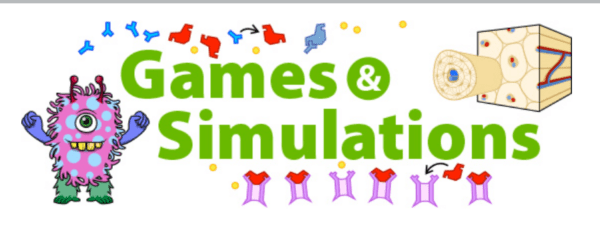
- Minecraft: Minecraft is a popular sandbox game that can teach various subjects, including math, science, and history. Minecraft’s open-world environment allows learners to explore, experiment, and create in a virtual world.
- Scratch: Scratch is a programming language and online community that allows learners to create interactive stories, games, and animations. Scratch’s user-friendly interface and drag-and-drop coding make it easy for learners of all ages to start coding.
- SimCity: SimCity is a city-building simulation game that can be used to teach urban planning, economics, and environmental science. SimCity’s realistic simulation of urban life allows learners to explore complex issues and experiment with different solutions.
Online Courses and Certification
Online courses and certification programs have made it easier for learners to acquire new skills and advance their careers. With a wide range of online courses and certification programs, learners can choose the one that best suits their needs and career goals. Some popular online courses and certification programs include:
- Coursera: Coursera is an online learning platform that offers courses and certifications from top universities and organizations worldwide. Coursera’s courses cover various subjects, from business and technology to health and social sciences.
- edX: edX is an online learning platform that offers courses and certifications from top universities and organizations worldwide. edX’s courses cover various subjects, from computer science and engineering to humanities and social sciences.
- Udacity: Udacity is an online learning platform that offers courses and certifications in technology and business. Udacity’s classes are designed to be hands-on and project-based, allowing learners to gain practical skills and experience.
Edutainment Content Creation
Creating edutainment content requires creativity, instructional design, and technical skills. This section will discuss the critical aspects of educational content creation, including storytelling and visualization, video production and YouTube, and educational television and media.
Storytelling and Visualization

Storytelling plays a critical role in effective educational content creation. You invite your audience to fully immerse in your world by crafting compelling stories. Here, you can present complex ideas and information in a highly relatable format. Visualization is also an essential element of edutainment content creation. By using images, infographics, and animations, you can help learners visualize abstract concepts and ideas.
You must understand your audience’s needs and interests to create engaging edutainment content. You can use surveys, focus groups, and analytics tools to gather data on your audience’s preferences and learning styles. This data can help you create content that resonates with your audience and keeps them engaged.
Video Production and YouTube
Video is a powerful medium for educational content creation. YouTube is the world’s largest video-sharing platform, making it an excellent channel for distributing educational content. To create compelling edutainment videos, you must focus on the content, production quality, and promotion.
Your edutainment videos should be informative, engaging, and entertaining. You can use humour, storytelling, and music to make your videos more engaging. The production quality of your videos should be high, with clear audio, visuals, and editing. You can use professional video editing software to create polished videos.
Promotion is also critical for educational content creation. You can use social media, email marketing, and paid advertising to promote your educational videos on YouTube. You can also collaborate with other YouTubers and influencers to reach a wider audience.
Educational Television and Media
Educational television and media are also effective channels for educational content creation. Educational TV shows, documentaries, and podcasts can provide engaging and informative content for learners. You can use these channels to reach a wider audience and promote educational content.
To create compelling educational TV shows and media, you must focus on the content, production quality, and distribution. Your content should be informative, engaging, and relevant to your audience. The production quality of your TV shows and media should be high, with clear audio, visuals, and editing. Professional video editing software can create polished TV shows and media.

Distribution is also critical for educational TV shows and media. You can use TV networks, streaming platforms, and podcast directories to distribute educational content to a broader audience. You can also collaborate with other TV producers and media creators to reach a wider audience.
In conclusion, edutainment content creation requires a blend of creativity, instructional design, and technical skills. You can create effective educational content that engages and educates your audience by focusing on storytelling and visualization, video production and YouTube, and educational television and media.
Role of Stakeholders
Stakeholders play a crucial role in the success of edtech and Edutainment. They are the key players who can make or break the adoption of these technologies in the education sector. This section will discuss the role of three critical stakeholders: teachers and educators, parents and caregivers, and edtech entrepreneurs.
Teachers and Educators
Teachers and educators are the primary stakeholders in the education sector. They are responsible for imparting knowledge and skills to students. In the context of edtech and Edutainment, teachers and educators play a critical role in adopting and implementing these technologies. They are the ones who can identify the needs of their students and select the appropriate edtech and edutainment tools to enhance their learning experience.
Moreover, teachers and educators can also provide valuable feedback to edtech entrepreneurs on the effectiveness of their products. This feedback can help entrepreneurs improve their products and make them more suitable for the education sector’s needs.
Parents and Caregivers
Parents and caregivers are also important stakeholders in the education sector. They play a crucial role in supporting their children’s learning and development. In the context of edtech and Edutainment, parents and caregivers can provide valuable insights into their children’s learning needs and preferences.
Moreover, parents and caregivers can also advocate for adopting edtech and Edutainment in schools. By raising awareness about the benefits of these technologies, they can encourage schools and educators to adopt them.
EdTech Entrepreneurs
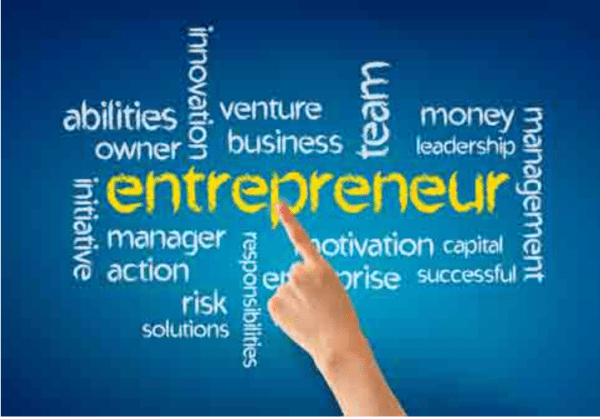
Edtech entrepreneurs are the driving force behind the development and innovation of edtech and Edutainment. They are responsible for creating and designing new products to enhance students’ learning experience. In the context of stakeholders, edtech entrepreneurs can provide valuable insights into the needs and preferences of the education sector.
Moreover, they can also collaborate with teachers and educators to develop products tailored to students’ needs. This collaboration can help entrepreneurs identify the gaps in the education sector and create products that can fill these gaps.
In conclusion, stakeholders play a critical role in adopting and implementing edtech and Edutainment in the education sector. Teachers and educators, parents and caregivers, and edtech entrepreneurs all have a role in ensuring that these technologies are practical and beneficial for students.
Global Perspectives
EdTech in Africa
EdTech has been rapidly growing in Africa, focusing on increasing access to education and improving learning outcomes. According to a report by Grand View Research, the global EdTech market size was valued at USD 142.37 billion in 2023 and is expected to grow at a compound annual growth rate (CAGR) of 13.6% from 2023 to 2030. In Africa, the market is expected to grow due to increased internet access and the need to provide quality education to children who cannot attend school.
Case Study: Ubongo in East Africa
Ubongo is a social enterprise that creates fun and educational content for children in East Africa. The company focuses on creating culturally relevant content relatable to children in the region. Ubongo’s content is available on TV, radio, and mobile devices, making it accessible to children from all backgrounds. The company’s mission is to help children learn, and it has reached over 17 million children across Africa.
Ubongo’s content includes interactive cartoons, songs, and games that teach children math, science, and literacy skills. The company’s content is available in local languages, which helps to promote learning and understanding. Additionally, Ubongo has partnered with schools to provide teacher training and support for integrating EdTech in the classroom.
Ubongo’s success in East Africa highlights the importance of culturally relevant content in EdTech. Ubongo has effectively promoted learning and improved educational outcomes by creating content relatable to children in the region. The success of Ubongo also highlights the need for continued investment in EdTech in Africa to help bridge the education gap and provide quality education to all children, regardless of their background.
Overall, EdTech has the potential to transform education in Africa, but it is essential to ensure that the content is culturally relevant and accessible to all children. By investing in EdTech and promoting gender attitudes that encourage girls to pursue education, we can help to create a brighter future for children in Africa.
Challenges and Considerations
When incorporating edtech and edutainment activities in education, there are several challenges and considerations to be aware of. In this section, we’ll discuss some of the most important ones.
Accessibility and Inclusion
One of the most significant considerations when implementing edtech and Edutainment in the classroom is ensuring all students have equal access to technology. This includes students with disabilities or those who come from low-income families. To ensure accessibility and inclusion, schools must provide all students with the necessary technology and resources, regardless of their background.
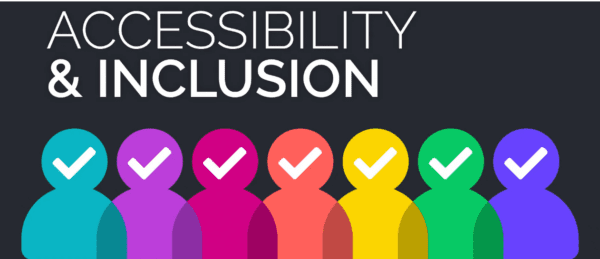
Additionally, it’s essential to ensure that the technology used is accessible to all students. This includes ensuring that the software and hardware are compatible with assistive technology, such as screen readers or alternative input devices. Moreover, it’s crucial to provide training and support to students needing additional assistance in using the technology effectively.
Mental Health and Well-being
Another important consideration when incorporating edtech and Edutainment in the classroom is the impact on students’ mental health and well-being. While technology can be beneficial in many ways, it can also lead to increased stress and anxiety, particularly if students are required to use it for extended periods.
To mitigate these risks, it’s essential to incorporate regular breaks and physical activity into the curriculum. Additionally, teachers should monitor students’ use of technology and provide support and resources to those struggling with stress or anxiety.
Cost-Effectiveness and ROI
Finally, cost-effectiveness and return on investment (ROI) are important considerations when incorporating edtech and Edutainment in the classroom. While technology can be expensive, it can also provide significant benefits regarding student engagement, learning outcomes, and overall classroom efficiency.
To ensure cost-effectiveness and ROI, it’s essential to evaluate the technology and resources used carefully and monitor their impact on student outcomes. Additionally, schools should consider alternative funding sources, such as grants or partnerships with local businesses, to help offset the cost of technology implementation.
In summary, while edtech and Edutainment can provide significant benefits in the classroom, it’s essential to be aware of the challenges and considerations involved in their implementation. By ensuring accessibility and inclusion, prioritizing students’ mental health and well-being, and carefully evaluating cost-effectiveness and ROI, schools can successfully incorporate technology into their curriculum and provide students with the tools they need to succeed.
Future Directions
As technology continues to advance, the future of education is set to be transformed with edtech and Edutainment. We can expect to see some future directions in the coming years.
Hybrid Learning Environments
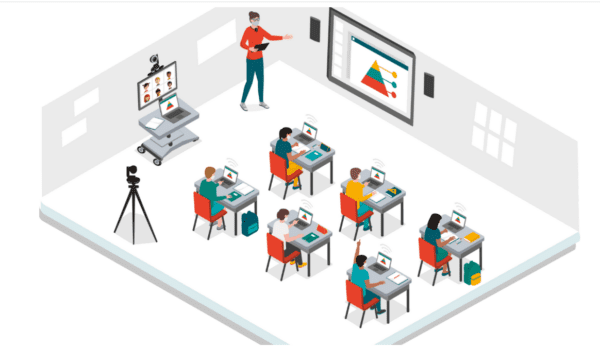
Hybrid learning, which combines both online and offline learning, is predicted to become the norm. The COVID-19 pandemic accelerated the adoption of online learning, with many students and professionals turning to digital platforms to continue their education. As the world adapts to new technologies, hybrid education is expected to become more popular. This approach allows students to learn at their own pace and in their own time while still being able to interact with teachers and peers in person.
Personalized Learning
Personalized learning is another trend that is gaining popularity in the edtech space. With the help of technology, it is now possible to tailor learning experiences to the individual needs of each student. This approach can help students learn more effectively by providing content relevant to their interests and learning styles. Personalized learning can also help increase engagement and motivation, leading to better learning outcomes.
Impact on Learning Outcomes
The impact of edtech and Edutainment on learning outcomes is much debated. While some studies have shown that technology can positively affect learning outcomes, others have found no significant difference. It is important to note that the effectiveness of edtech and Edutainment depends on how it is used. When used correctly, technology can help to enhance learning outcomes by providing students with new ways to engage with the material and making learning more fun and interactive.
In conclusion, the future of education is set to be transformed by edtech and Edutainment. Hybrid learning environments and personalized learning are two trends we expect to see in the coming years. While the impact of edtech on learning outcomes is still up for debate, it is clear that technology has the potential to enhance learning experiences and make education more accessible and engaging for all.





